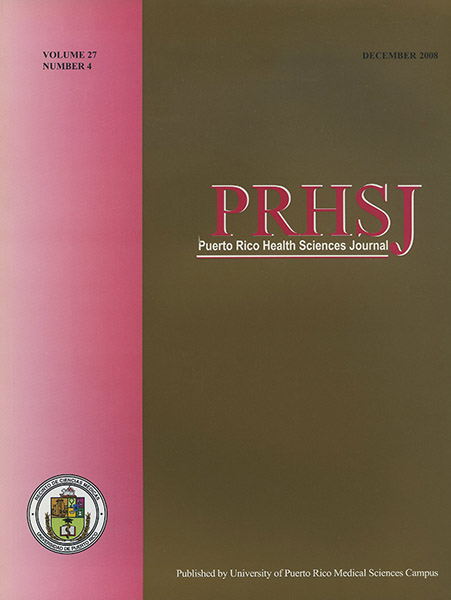Abstract
Background: Disease management programs (DMP) have been shown to be effective in management of patients with heart failure (HF). Objective: To describe the experience at the Heart Failure and Transplantation Clinic of the Cardiovascular Center of Puerto Rico and the Caribbean (HFTC-CCPRC) implementing a model of DMP to a Hispanic population afflicted by HF. Methods: A retrospective study was performed. Medical records from patients referred to the HFTC-CCPRC from 1999 to 2005 were selected for review. Information regarding drug regimen, New York Heart Association (NYHA) functional class, left ventricular ejection fraction (LVEF) determinations by echocardiography or scintigraphic ventriculography, left ventricular dimensions measurements, maximal oxygen consumption (MVO2 max) determination, hospitalizations, and death cases were obtained from the initial evaluation and at 3, 6, and 12 months post-intervention at the HFTC-CCPRC. Results: A total of 633 records were screened, from which 244 had complete information for analysis. After 12 months of treatment at the HFTC-CCPRC, NYHA functional class had decreased from 2.70 ± 0.59 to 2.13 ± 0.53 (p < 0.01). LVEF had also increased from 21.0 ± 8.2% to 39.9 ± 14.6% (p < 0.01). Hospitalization rate was reduced from 62.7% within the year prior to initial evaluation to 7.2% at the end of the 12-month period (p < 0.01). Conclusions: In our patient population, we found significant improvement in several parameters, including NYHA functional class, LVEF, and hospitalization rate after intervention at the HFTC-CCPRC. These findings are most likely related to improved guideline adherence, and are consistent with published data regarding the value of DMP’s.
Authors who publish with this journal agree to the following terms:
a. Authors retain copyright and grant the journal right of first publication with the work simultaneously licensed under a Creative Commons Attribution License that allows others to share the work with an acknowledgement of the work's authorship and initial publication in this journal.
b. Authors are able to enter into separate, additional contractual arrangements for the non-exclusive distribution of the journal's published version of the work (e.g., post it to an institutional repository or publish it in a book), with an acknowledgement of its initial publication in this journal.
c. Authors are permitted and encouraged to post their work online (e.g., in institutional repositories or on their website) prior to and during the submission process, as it can lead to productive exchanges, as well as earlier and greater citation of published work (See The Effect of Open Access).
